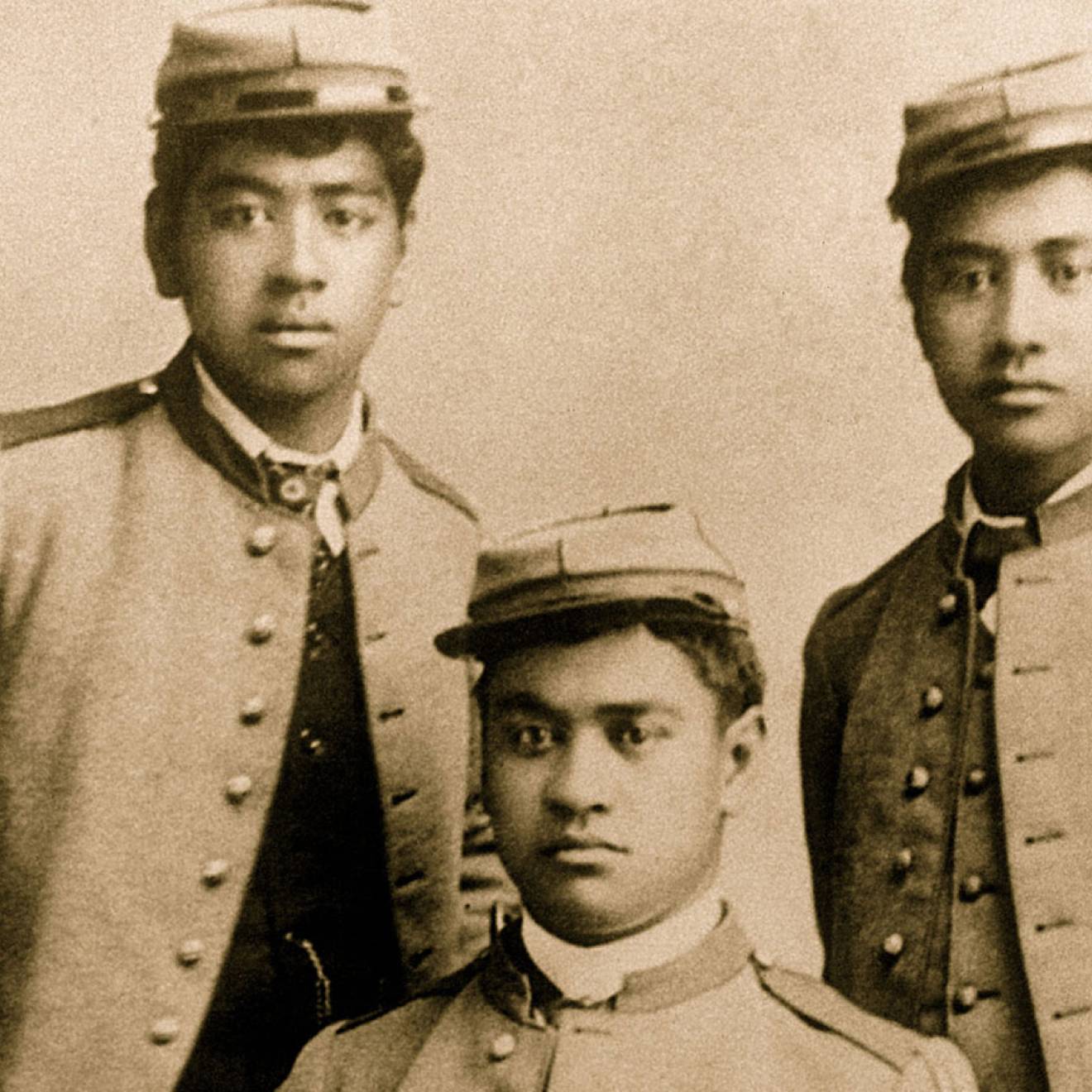With travel and large family gatherings off limits, this is likely to be a very different Thanksgiving.
And though we may not be coming together around the holiday table the way we’d like, the year’s crises have, for many, led to an increased desire to support our communities and contribute to the greater good.
The sight of bare supermarket shelves, rising COVID-19 infections among agricultural workers, and the wildfires that ravaged California wineries and farms have all brought a new awareness to the systems and people we rely upon for our food, said UC Berkeley faculty member William Rosenzweig. His class, Edible Education 101, is free and open to everyone, and aims to help people practice what he calls “enlightened eating.”
“Becoming an enlightened eater means waking up to the habits and thinking around our food,” he said. “It’s about asking: How could I make choices that result in healthier people and a healthier planet?”
Helping others is a great way to feel more connected during times of isolation, according to UC experts. And with more time and fewer family obligations than usual, now is the perfect time to make more mindful choices that can bring deeper meaning to your holiday meal. And mindful choices aren’t necessarily more expensive ones — it can also mean shopping with a “make the most of what you have” strategy and getting more mileage out of your leftovers, or using the resources you might have spent on Uncle Alan’s portion to support a local farmer.
So, with that thought, we asked UC experts for their tips on creating a feast that honors the people — and our planet — that make the holiday bounty possible.
Here are a few ways to start.
Buy from local and small-scale farms
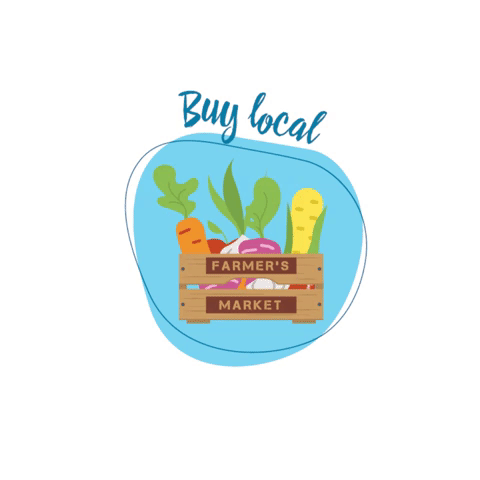
Be it sweet potatoes or your holiday turkey, you’ll have a deeper connection to the food you eat if you get to know how it’s grown. The best way to find out: Buy directly from the grower.
As the food basket of the nation, California grows almost everything on the typical Thanksgiving menu. And the state is gifted with an abundance of small, local farms that produce humanely grown livestock and organically grown produce.
Family farms have been hard hit this year, as many of the restaurants that buy their products have cancelled or slashed their orders, according to Pamela Kan-Rice, the spokesperson for UC’s Agriculture and Natural Resources division.
The pandemic is also having a devastating effect on essential farm workers, making it more important than ever to support sustainable, small-scale farms that incorporate fair labor principles into their operations.
“A smaller farm has fewer laborers and they can spread out more easily,” said Brooks Schmitt, a staff member with UC Santa Cruz’s Center for Agroecology and Sustainable Food Systems. Schmitt’s job is to source food from local and sustainable farms in the Santa Cruz area, as part of his efforts to teach students how to cook and eat sustainably, even on very tight budgets. “These farmers have a more vested relationship with their workers. They more closely resemble a family.”
Buying local means your food is often fresher, has a smaller carbon footprint and you can see all that has gone into producing what’s on your plate.
“Whenever you have the privilege and the opportunity to buy from the person who grows your food, it’s an amazing connection,” Rosenzweig says.
“Don’t just buy from the grower, have a conversation. Ask what’s going well and what isn’t. When you learn it takes 100 days to grow a carrot and how much work it takes to defend it from predators, it gives you a whole new appreciation for the meal.”
- UC Division of Agriculture and Natural Resources (UCANR) Direct-from-Farm directory makes it easy to find growers in your area.
Shop slowly and look for labels you can trust
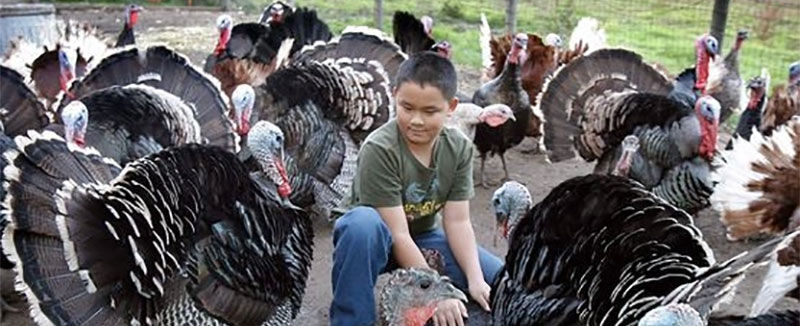
UCANR's Heritage Turkey Project, now in its 15th season, invites youth in the 4-H program to take a hand in raising the birds. Each young grower raises a small flock on their own property and shoulders the responsibility of providing their feed and care. The turkeys are available for sale to the public.
Even at the grocery store, you can make more mindful choices by seeking out food from small, local farms that is produced in humane and environmentally-responsible ways.
“Are you buying something that is farmed sustainably, organically and reduces the use of pesticides?” said Rosenzweig. “Don’t make a rushed or automatic choice. This is an opportunity to wake up and learn more about what you are putting in your body.”
Unfortunately, claims on the packaging can be misleading. Terms like “cage-free,” “free-range,” and even “humanely raised,” are vaguely defined and not systematically monitored, so it’s better to look for labels by reputable certification systems, such as Animal Welfare Approved, USDA-certified and Demeter Certified Biodynamic, according to FoodPrint, a nonprofit to promote sustainable agriculture by helping consumers make low-impact food choices.
When picking out the holiday bird, UC Berkeley expert Jay Graham says to try and avoid poultry that was raised with antibiotics, which can be a sign that the animals live in crowded conditions.
Consider a heritage turkey, which is raised in an environment much more consistent with a turkey’s natural life cycles. Unlike most commercially produced turkeys — which are bred for size — heritage turkeys maintain genetic diversity.
“Large, muscle mass ‘Hulk Hogan’ turkeys don’t do very well in their environment and need lots of antibiotics to thrive,” Graham said. Bonus: Heritage turkeys are bred for flavor — and with a smaller Thanksgiving, who needs an enormous bird?
- Label decoders from Foodprint and the Environmental Working Group can help cut through the confusion.
- Get your heritage turkey from UCANR or these other farms recommended by Graham.
Consider how workers are treated
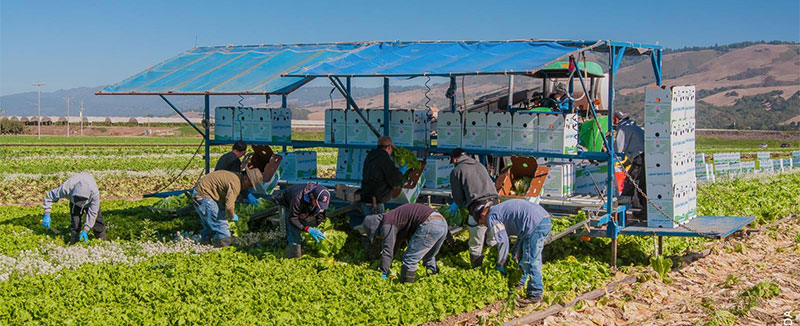
Farmworkers harvest lettuce in Watsonville, Santa Cruz County. Ask your local market or look for labels to determine whether your food is being provided by workers treated fairly.
Another labeling system that has been gaining traction helps consumers identify products picked by workers who are treated fairly.
Some programs that address farm labor conditions include the Equitable Food Initiative, Fair Trade USA and the Fair Food Program. These initiatives are gaining attention as concerns over COVID-19 outbreaks at meatpacking plants and large industrial farms have brought exploitative working conditions to the fore, raising the question: What do we need to do to protect those who make it possible for us to have this food?
Agricultural workers — many of whom are undocumented — are among the lowest paid and least protected groups in the U.S. labor force, said UC Berkeley Ph.D. student Vera Chang, who studies forces of social change and policy shifts in the nation’s food industry.
The most robust systems, Chang said, are driven by workers themselves, enforced with legally-binding mechanisms and have transparent publicly-available data to back up claims, such as the Fair Food Program and Milk with Dignity that remedy human rights violations latent in tomato and dairy industries, respectively.
Rigorous monitoring has effectively eliminated instances of forced labor, sexual harassment and other forms of abuse while providing safety measures that include sick leave, access to personal protective gear and socially distanced working conditions in the midst of a pandemic.
"Without a safe and protected agricultural workforce, reliable food supplies and healthy communities are not possible, Chang said. “The public health crisis underscores that protecting essential workers is a practical, moral, and national issue."
- Ask your farmer about their labor practices when shopping at the farmers’ market or picking up your CSA box.
- Look for labels focused on equity. Among the most rigorous are Fair Food Program and Milk with Dignity, available through retailers and brands such as Whole Foods and Ben & Jerry’s.
- Learn about other ways to support through organizations such as Farmworker Justice, Food Chain Justice Alliance, Alliance for Fair Food and Venceremos.
Share the bounty
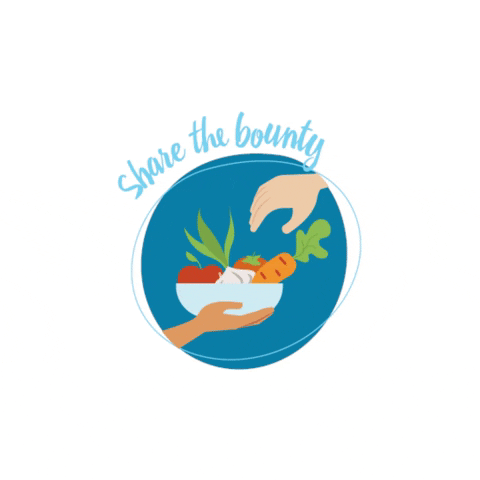
Though your own holiday guest list may be small this year, invite others to eat with you by supporting food banks, food delivery programs for seniors, UC food pantries and similar efforts. Along with donating money and goods, many programs also offer COVID-safe ways to volunteer your time, for example by doing grocery runs and delivering meals.
With more people out of work, going through economic hardship or struggling with isolation, the needs are greater than ever — and research suggests helping others in your community will increase your own sense of happiness and well-being.
The same neural reward system that is linked to addiction spurs feelings of pleasure when we give to others. It also strengthens feelings of connection, community and a sense of purpose at a time when many of us feel isolated and in limbo.
“Connecting to others is what makes life worth living,” UC Riverside happiness expert Sonja Lyubomirsky said in a recent interview with the charity Action for Happiness. “When we help others, we feel more connected to those people and to humanity as a whole.”
- Food banks are hurting for volunteers during COVID-19. Donate to one near you, sign up volunteer opportunities and fight hunger in other ways at Feeding America.
- Meals on Wheels, which provides meals and companionship for homebound seniors, has expanded its services by almost 50 percent since the pandemic hit, with COVID-safe ways to help.
- Donate your gently used jackets or organize a coat drive in your area with One Warm Coat.
- Ask your church, synagogue or other religious institution about food drives and other efforts to support those in need.
Waste not, want not
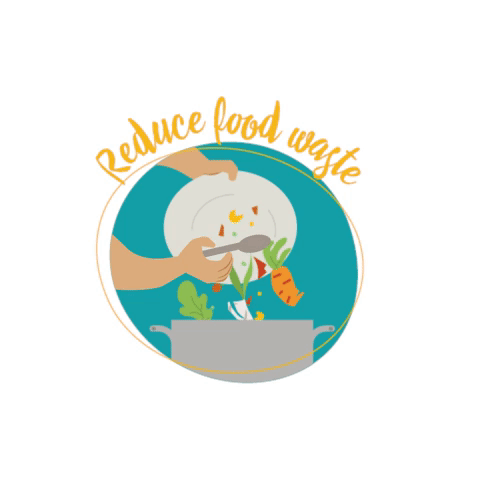
Worried your groaning table will lead to an overflowing compost bin?
Food waste doesn’t only squander thousands of dollars each year, it’s also a huge contributor to climate change. In fact, if food waste were a country, it would be the third largest greenhouse gas emitter, behind China and the U.S.
With people pinching pennies and trying to reduce trips to the grocery store, now is the time to try practices that make your food go farther, says Sue Mosbacher. She is coordinator of a statewide Master Food Preserver program run by UC’s Division of Agriculture and Natural Resources.
“Rather than putting all that effort for a meal you eat in one day, you can enjoy it for two to three weeks if you preserve it properly,” she said. “It isn’t just about putting things in jars for a year,” Mosbacher said. “It’s also about, ‘How do you keep food so it doesn’t go bad in the refrigerator? How do you store it in the pantry so the bugs don’t get it?’”
The first step is to plan your shop and don’t over-buy. Mosbacher’s tip: Survey the pantry before you go. Jam and jelly make great glazes while lifeless frozen vegetables and the liquid from a can of tomatoes make for a flavorful soup stock.
After the meal, avoid the temptation to leave cleaning up for later and store the food right away. Time and temperature cause the growth of bacteria which spoil food faster. Cool warm food in the refrigerator before freezing it, and separate leftovers into smaller portions that you can thaw as you are ready to eat. Use freezer-safe bags and containers that keep out moisture, which can crystalize and cause freezer burn, and clearly label the bags for reuse.
Rather than eating turkey sandwiches for a week, give your leftovers a second life as mashed potato pancakes, crockpot cranberry sauce meatballs, creamy leftover turkey pasta or stuffing muffins, which also make great treats to deliver to neighbors.
“I spend a lot of time shopping and in the kitchen preparing food for holiday meals. I don’t want to let that time and all the love and care that went into the preparation of the meal go to waste,” Mosbacher said.
Support Indigenous communities
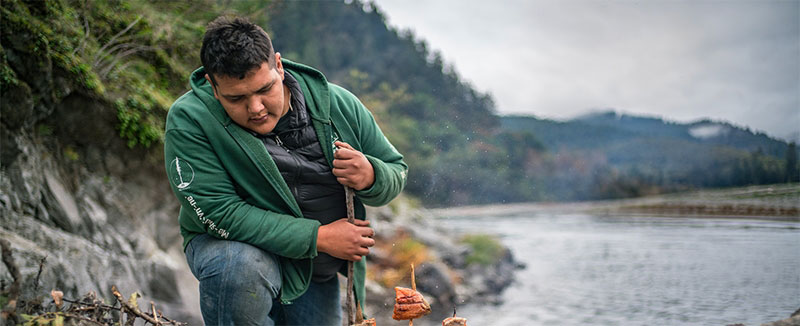
Samuel Gensaw (Yurok), co-founder of Northern California’s Ancestral Guard, is featured in the film “Gather,” about Indigenous chefs, scientists and activists around the country working to restore their spiritual, political and cultural identities through food sovereignty.
For many, Thanksgiving is a treasured holiday, filled with loved ones and delicious food. But its history and impact on native communities is troubling and painful. How can we approach the holiday with this in mind?
Learning more about local tribes and tribal traditions is a place to start, along with supporting businesses, political causes and nonprofits that benefit native communities. This is especially important given the devastating impact that the pandemic has had on these communities.
The themes of Thanksgiving, such as acknowledging the land, being grateful, coming together and supporting family and community have long been celebrated in Indigenous traditions, according to Dr. Elizabeth Hoover, a professor of environmental science, policy and management at UC Berkeley. “There are thanksgiving feasts many times throughout the year: when the thunder starts, when the sap flows, when it’s time for the seeds to be planted, when the first wild strawberries come out, when the green beans are ready, when the corn is ready, when the harvest is ready.”
Native communities have rich food traditions. Learning about them and buying native foods has the benefit of also being healthful and eco-friendly. Other possibilities include making donations to local tribes and supporting tribal-led initiatives in your community, from petitioning lawmakers to increase COVID-19 relief to advocating for the removal of statues of those who enslaved native people.
- Find tribes in your area
- Discover Native foods with Civil Eats
- Check out this list of American Indian Foods producers
- Learn more about how Native people view Thanksgiving and how to help
